Description of the page
Get Started for FREE
Sign up with Facebook Sign up with X
I don't have a Facebook or a X account


|
Primary history
Connecting with the past. Research-based, practical ideas for teaching and learning history in the primary classroom. This topic is strongly aligned to the Australian Curriculum: history. Curated by Catherine Smyth |
 Your new post is loading...
Your new post is loading...

|
Scooped by
Catherine Smyth
May 10, 2015 10:53 PM
|
‘to no one will we sell, to no one deny or delay right or justice

|
Scooped by
Catherine Smyth
May 5, 2015 10:54 PM
|
I found the 'learning contexts' section in the report of the 2014 U.S. History Assessment results very interesting reading from a pedagogical and research perspective. Is there a link between textbook-based lessons and flat-lining test scores? How should history be taught in the primary classroom?

|
Scooped by
Catherine Smyth
May 5, 2015 9:36 PM
|
History teacher Jody Passanisi reports once again on her flipped teaching experiment again and finds herself "a little less starry-eyed" and more strategic.
This scoop.it site is curated by Maree Whiteley who has collected a range of appropriate, engaging and practical curriculum resources that are strongly aligned to the Australian Curriculum: History.

|
Rescooped by
Catherine Smyth
from Causes and Effects of Change in the Local Community
April 26, 2015 5:27 AM
|
My Place (1988), available from http://www.walkerbooks.com.au/Books/Walker-Classics-My-Place-9781921150654 , is a picture book written by Nadia Wheatley and illustrated by Donna Rawlins. The story focuses on one area in Australia and travels back in time 200 years from 1988 to 1788, with many different children describing their lives and their surrounding community over time. With each child's story, only some aspects oe the area such as the fig tree remain the same, while everything else seems to change around them.
Description of Site:
This teacher resource is fantastic for teaching Stage 2 HSIE in relation to cause and effect of community change. Classroom ideas are divided according to educational themes, and I feel the ‘Connecting with the Land, Environment and History’ section would be most valuable to approaching my topic area in the classroom.
Teaching Ideas:
This resource provides multiple opportunities for students to develop their skills working with maps and timelines, which would allow a visual representation of community change throughout the book. I would suggest first mapping changes in the community within My Place, before then considering the students’ own community. Students could use Google Maps to examine different areas of their local or school community, and either visit their local library or look up map archives to view geographical change over time. Beyond this, students could begin to consider the effects of such changes, and what that might mean for the local community in the future.
This resource also has potential links to Aboriginal history, as students could be asked to research and map their local Indigenous history on a timeline.
Differentiation Activity:
When working with multiple ability levels, an extension for this timeline activity could be to view an episode of the 26-part ABC series based on this book and complete a worksheet.
For example,
http://www.myplace.edu.au/themes/culture.html has a number of clips students can view regarding local culture and change, before completing a resource sheet to challenge their thinking.

|
Scooped by
Catherine Smyth
April 21, 2015 9:07 PM
|
Big History Project Check out a copy of the BHP writing guide below - this excerpt is taken from pages 23-24 of the BHP Course Teaching Guide. Visit the Big History Project website to register for ...
Instructional strategies that can be implemented in the primary classroom.

|
Scooped by
Catherine Smyth
April 9, 2015 1:31 AM
|
Process drama is an imaginative tool for classrooms to explore issues and solve problems
Process drama is an effective way to generate historical knowledge in the primary classroom. It is less about "acting" and more about attitude, experience and empathy.

|
Scooped by
Catherine Smyth
April 23, 2013 3:04 AM
|
Contrary to the opinion of a few out of touch politicians and the odd public commentator who hasn't set foot in a school this century, ANZAC DAY is solemnly commemorated in Australian schools.
Why is ANZAC DAY a significant event in Australia? How do we assign significance to an event or a person?
Geoffery Partington suggests the following criteria can be used to determine significance:
1. Importance – to people living at the time
2. Profundity – how deeply people’s lives were affected by it
3. Quantity – how many lives were affected
4. Durability – for how long people’s lives were affected
5. Relevance – the extent to which the event has contributed to an increased understanding of present life
Another way to think about the significance of something is to use Christine Counsell's model and ask whether the event or person was:
1. Remarkable (event/circumstance/person was remarked upon at the time or after)
2. Remembered (event/circumstance/person was important at some stage in history within collective memory)
3. Resonant (people like to identify with it, reveal something about individuals or society)
4. Resulting in change (consequences for the future -turning point)
5. Revealing- (about some other aspect of the past)
The Australian War Memorial website provides background information about this significant event.

|
Scooped by
Catherine Smyth
April 1, 2015 12:41 AM
|
This Canadian-based study focuses on the ways people make sense of the past through engaging in historical inquiry at museums.

Want to know how to engage schools by using your museum's artefacts to make sense of history? Visit this site.

|
Scooped by
Catherine Smyth
March 31, 2015 10:58 PM
|
Use drama to activate student learning about the past. Here are a collection of drama activities for Years 2-6 that focus on themes of immigration and cultural diversity.

Use drama to activate learning about cultural diversity in the classroom. Practical lesson plans.

|
Scooped by
Catherine Smyth
March 18, 2015 8:43 PM
|
National Centre for History Education ? Hyperhistory - the website of resources for teachers and students of history in Australian primary and secondary schools.
Essential reading, accessible research, practical ideas for teaching history in primary classrooms. Dip in to the The Teachers' Guide, 'Making History: a guide for the teaching and learning of history in Australian schools'.

|
Rescooped by
Catherine Smyth
from Primary history- Australia as a Nation
March 17, 2015 8:57 PM
|
Essential questions and authentic tasks work together in a project-based learning environment
Drive historical inquiry with effective questions and design authentic assessment tasks when teaching history in the primary school.

Some nice ideas for a problem-based approach to learning about Migration. Drive the inquiry with an effective and essential question and design authentic tasks to deepen understanding.

Some nice ideas for a problem-based approach to learning about Migration. Drive the inquiry with an effective and essential question and design authentic tasks to deepen understanding.

|
Scooped by
Catherine Smyth
February 17, 2015 8:54 PM
|
Each year teachers and students in Australian schools prepare for ANZAC DAY. This year will be no different.

Are you ready for ANZAC Day in your school?

|
Scooped by
Catherine Smyth
February 8, 2015 8:28 PM
|
In this Unit of Work, Year 4 students adopt an historical inquiry approach to learn about what life was like in 1788 through a range of different texts. Assessment tasks include creating an informative text and an historical narrative excerpt.

|
Scooped by
Catherine Smyth
February 8, 2015 8:14 PM
|
Critical conversations help students move from spoken-like to more written-like texts. This article highlights the importance of conversations between teachers and students in constructing joint texts. Scroll down to see the implications of the critical conversations approach for helping students construct historical narratives.

This article highlights the importance of conversations between teachers and students in constructing joint texts.

Critical conversations help students move from spoken-like to more written-like texts. This article highlights the importance of conversations between teachers and students in constructing joint texts. Scroll down to see the implications of the critical conversations approach for helping students construct historical narratives.

|
Scooped by
Catherine Smyth
February 5, 2015 11:21 PM
|
The S.O.A.P.S. strategy is a 5-step process that helps students make sense of an historical document. This website provides a handy PDF for teachers to use.

|
Scooped by
Catherine Smyth
February 3, 2015 7:14 PM
|
A variety of images mainly from early school life in NSW
What was school like in the olden days? What things have stayed the same and what things are different?

|
Scooped by
Catherine Smyth
February 3, 2015 6:50 PM
|
Stories of convict transportation to Australia, from the collections of the State Library of New South Wales.
Teaching about convicts? Check out the array of online digital resources on this State Library NSW Pinterest board.

Teaching about convicts? Check out this wonderful range of online digital resources on the NSW State Library Pinterest board

|
Scooped by
Catherine Smyth
January 26, 2015 7:21 PM
|
This is a link to an article I have recently written for the History Teachers' Association of Victoria on the use of iPads to enhance cross-curricular history teaching and learning. It is due to be published in their June publication. https://www.dropbox.com/s/ytmo8wlojmzsh1a/Shaping%20the%20iHistorians%20of%20tomorrow.pdf?dl=0 …

|
Rescooped by
Catherine Smyth
from HSIE K-6
November 13, 2014 8:03 PM
|
Creating a classroom newspaper around a history topic is an authentic way to address both literacy and history outcomes.
Students can explore what life was like in a particular time and place, bringing together different aspects of life in newspaper stories and pictures. Pose questions about events, people, places, beliefs and attitudes during a particular period. Students gather evidence (primary or secondary sources) that answer their questions of inquiry. Using evidence students construct a historical narrative, report or explanation. Publish a classroom newspaper using student contributions.
This website has a range of free downloadable templates of newspapers. Classroom newspapers can be paper-based or published online.
For further research and teaching ideas go to to:
http://www.readingonline.org/articles/art_index.asp?HREF=lund/index.html
Abstract: This article describes a project in which the reality of newspaper production was integrated into the language arts curriculum in a second-grade classroom. The class newspaper was produced in both hard copy and multimedia versions, using The Student Writing Center software and HyperStudio on a single classroom computer. The difficulties and successes of the project are described.
http://www.readwritethink.org/classroom-resources/lesson-plans/creating-classroom-newspaper-249.html

Creating a classroom newspaper around a social or environmental issue or a history topic is an authentic way to address both literacy and curriculum outcomes in HSIE K-6. This website has a range of free downloadable templates of newspapers. Classroom newspapers can be paper-based or published online.
For further research and teaching ideas go to to:
http://www.readingonline.org/articles/art_index.asp?HREF=lund/index.html
Abstract: This article describes a project in which the reality of newspaper production was integrated into the language arts curriculum in a second-grade classroom. The class newspaper was produced in both hard copy and multimedia versions, using The Student Writing Center software and HyperStudio on a single classroom computer. The difficulties and successes of the project are described.
http://www.readwritethink.org/classroom-resources/lesson-plans/creating-classroom-newspaper-249.html

A great way to combine literacy and history.

They're realistic and the best part, they are FREE! A great resource to use when writing news articles in the primary classroom.

|
Scooped by
Catherine Smyth
November 3, 2014 6:35 PM
|
In this poetry activity, students analyze and interpret historical, primary source content, then synthesize the information, making personal connections with history as they retell it from their own perspective. The activity provides an opportunity for students to creatively share their historical understanding with an authentic audience.
Some rich activities for teaching historical literacy.

|
Scooped by
Catherine Smyth
November 3, 2014 5:32 PM
|
The sensory exploration graphic organizer is a great way to introduce students, especially younger ones, to primary source analysis. It also helps with vocabulary development. Encourage students to write to fill in each column for each sense. After, you may have students create a poem of their choice using the words they brainstormed; they may choose …
This downloadable graphic organiser uses sensory exploration as a way for children to make sense of primary sources.

A useful tool to use when exploring primary sources with younger students.

|
Scooped by
Catherine Smyth
October 26, 2014 7:30 PM
|
The NSW Board of Studies (BOSTES) has just advised, "There is no intention to change the implementation schedule currently underway for the K-10 English, Mathematics, Science and History syllabuses." This means, 2016 will see the implementation of the new history syllabus in primary classrooms in NSW.

|
Scooped by
Catherine Smyth
October 14, 2014 9:55 PM
|
This teaching resource is aimed at building historical skills in Kindergarten (foundation year). There is a 15 minute video introducing teachers to the inquiry learning approach used in the resource and 6 short videos to use in the classroom.

|
Scooped by
Catherine Smyth
October 7, 2014 10:57 PM
|
Need a good way to introduce what historical thinking is and why it is important? Use this video to start the conversation. http://teachinghistory.org/histor...




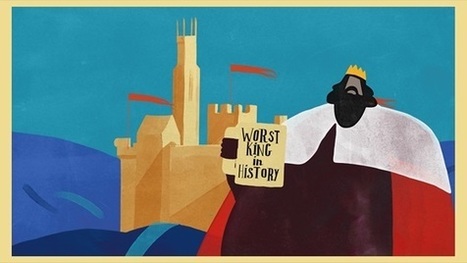

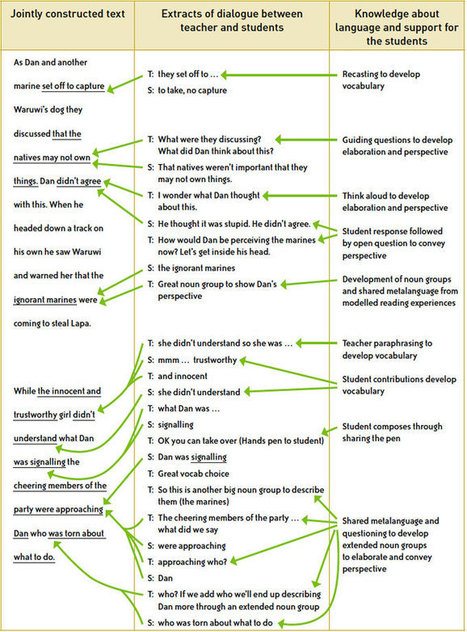


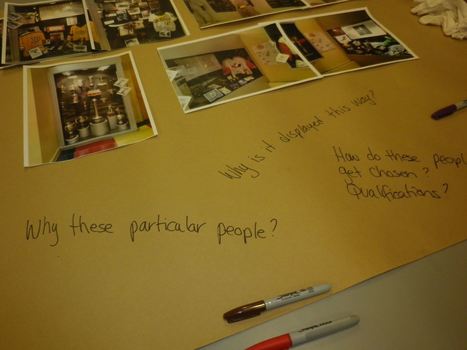

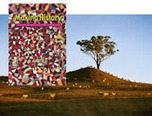

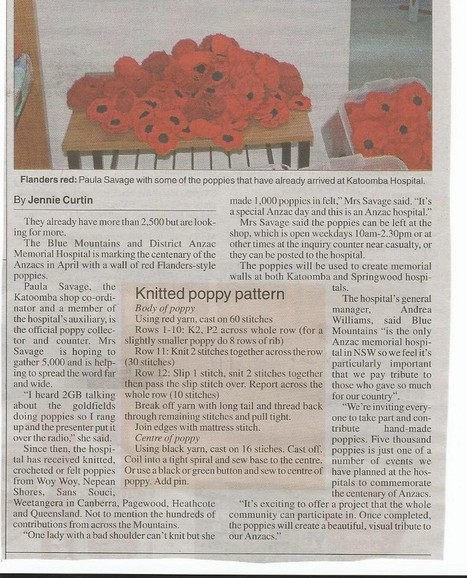
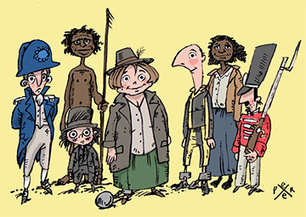
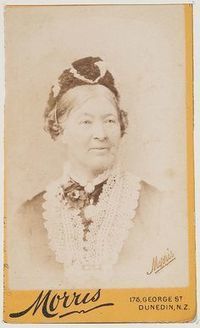
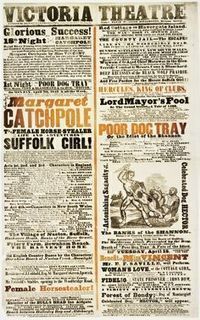




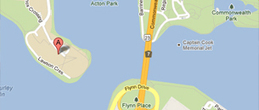





A wonderful list of digital resources aligned to specific topics and year levels in the Australian Curriculum: History.